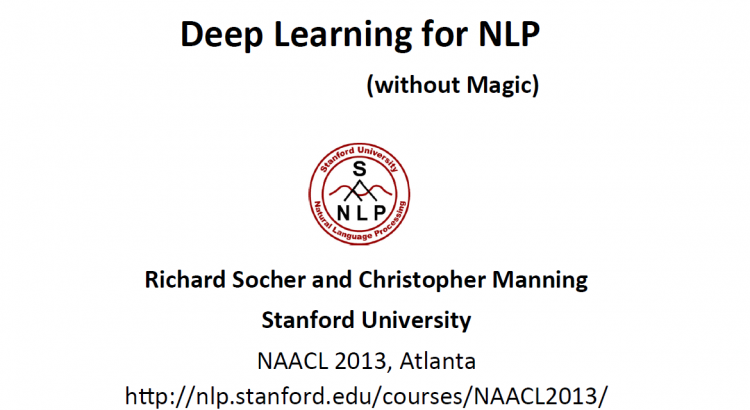Pylearn2 is a machine learning research library. This does not just mean that it is a collection of machine learning algorithms that share a common API; it means that it has been designed for flexibility and extensibility in order to facilitate research projects that involve new or unusual use cases. In this paper we give a brief history of the library, an overview of its basic philosophy, a summary of the library’s architecture, and a description of how the Pylearn2 community functions socially.
Etiket: Yoshua Bengio
Makale: EmoNets: Multimodal Deep Learning Approaches for Emotion Recognition in Video
The task of the emotion recognition in the wild (EmotiW) Challenge is to assign one of seven emotions to short video clips extracted from Hollywood style movies. The videos depict acted-out emotions under realistic conditions with a large degree of variation in attributes such as pose and illumination, making it worthwhile to explore approaches which consider combinations of features from multiple modalities for label assignment. In this paper we present our approach to learning several specialist models using deep learning techniques, each focusing on one modality. Among these are a convolutional neural network, focusing on capturing visual information in detected faces, a deep belief net focusing on the representation of the audio stream, a K-Means based “bag-of-mouths” model, which extracts visual features around the mouth region and a relational autoencoder, which addresses spatio-temporal aspects of videos. We explore multiple methods for the combination of cues from these modalities into one common classifier. This achieves a considerably greater accuracy than predictions from our strongest single-modality classifier. Our method was the winning submission in the 2013 EmotiW challenge and achieved a test set accuracy of 47.67% on the 2014 dataset.
Makale: Gated Feedback Recurrent Neural Networks
In this work, we propose a novel recurrent neural network (RNN) architecture. The proposed RNN, gated-feedback RNN (GF-RNN), extends the existing approach of stacking multiple recurrent layers by allowing and controlling signals flowing from upper recurrent layers to lower layers using a global gating unit for each pair of layers. The recurrent signals exchanged between layers are gated adaptively based on the previous hidden states and the current input. We evaluated the proposed GF-RNN with different types of recurrent units, such as tanh, long short-term memory and gated recurrent units, on the tasks of character-level language modeling and Python program evaluation. Our empirical evaluation of different RNN units, revealed that in both tasks, the GF-RNN outperforms the conventional approaches to build deep stacked RNNs. We suggest that the improvement arises because the GF-RNN can adaptively assign different layers to different timescales and layer-to-layer interactions (including the top-down ones which are not usually present in a stacked RNN) by learning to gate these interactions.

Doğal Dil İşleme için Derin Öğrenme
Machine learning is everywhere in today’s NLP, but by and large machine learning amounts to numerical optimization of weights for human designed representations and features. The goal of deep learning is to explore how computers can take advantage of data to develop features and representations appropriate for complex interpretation tasks. This tutorial aims to cover the basic motivation, ideas, models and learning algorithms in deep learning for natural language processing. Recently, these methods have been shown to perform very well on various NLP tasks such as language modeling, POS tagging, named entity recognition, sentiment analysis and paraphrase detection, among others. The most attractive quality of these techniques is that they can perform well without any external hand-designed resources or time-intensive feature engineering. Despite these advantages, many researchers in NLP are not familiar with these methods. Our focus is on insight and understanding, using graphical illustrations and simple, intuitive derivations. The goal of the tutorial is to make the inner workings of these techniques transparent, intuitive and their results interpretable, rather than black boxes labeled “magic here”. The first part of the tutorial presents the basics of neural networks, neural word vectors, several simple models based on local windows and the math and algorithms of training via backpropagation. In this section applications include language modeling and POS tagging. In the second section we present recursive neural networks which can learn structured tree outputs as well as vector representations for phrases and sentences. We cover both equations as well as applications. We show how training can be achieved by a modified version of the backpropagation algorithm introduced before. These modifications allow the algorithm to work on tree structures. Applications include sentiment analysis and paraphrase detection. We also draw connections to recent work in semantic compositionality in vector spaces. The principle goal, again, is to make these methods appear intuitive and interpretable rather than mathematically confusing. By this point in the tutorial, the audience members should have a clear understanding of how to build a deep learning system for word-, sentence- and document-level tasks. The last part of the tutorial gives a general overview of the different applications of deep learning in NLP, including bag of words models. We will provide a discussion of NLP-oriented issues in modeling, interpretation, representational power, and optimization.
Birinci Bölüm
İkinci Bölüm:
Sunum Materyali: